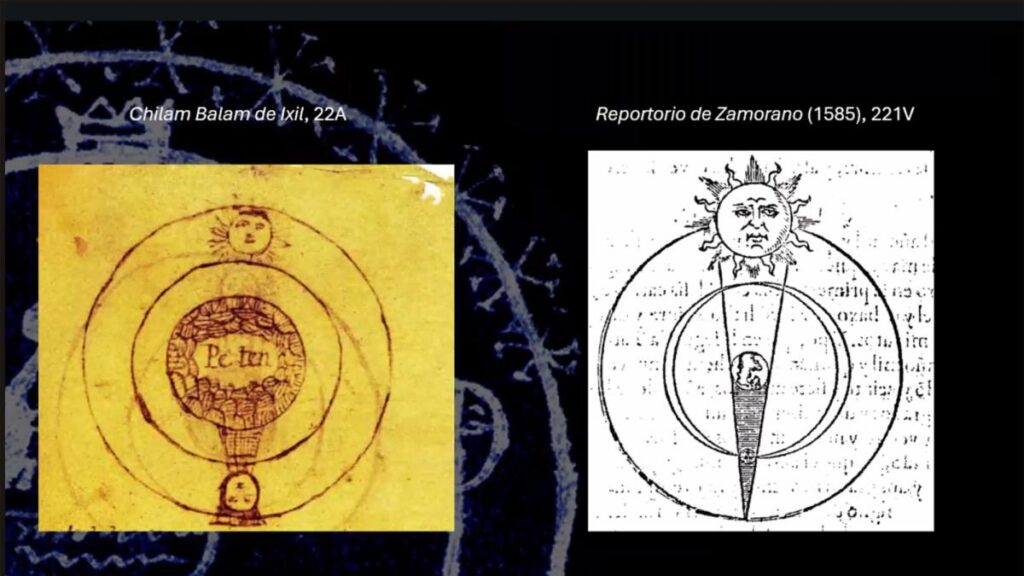Introduction to the Researcher and Her Project
Florencia Scandar, an investigator at the Instituto de Investigaciones Estéticas of the UNAM (National Autonomous University of Mexico), has discovered a remarkable fusion between pre-Hispanic Mayan cosmovision and Catholic religion in the eclipse images of the Chilam Balam Mayan books. These texts, dating from the 18th and 19th centuries, portray the Moon as the Virgen de Izamal, Yucatán’s patron since the 16th century.
Scandar’s Project: Iconotextuality in the Cultural Universe of Chilam Balam Books
Scandar leads the project “Iconotextuality in the Cultural Universe of the Chilam Balam Books,” which examines how Mayans integrated European concepts about astronomical phenomena (solar and lunar eclipses) into Latin-character manuscripts written in Mayan language.
Unique Aspects of the Chilam Balam Manuscripts
Unlike other texts from the same period, these were crafted by the Mayans themselves, who decided which information to preserve based on its cultural utility. Three of these books—Chilam Balam de Chumayel, Ixil, and Kaua—include chapters dedicated to eclipses. The Chumayel and Ixil texts preserve the Mayan notion of an astrological body being bitten by a creature, while Kaua more directly reflects European viewpoints, possibly influenced by Rodrigo Zamorano’s treatise Cronología y Repertorio de la Razón de los Tiempos.
Notable Representations in the Chilam Balam Books
One of the most striking representations is found on page 16r of the Chilam Balam de Chumayel, illustrating solar and lunar eclipses accompanied by glosses explaining the phenomenon from a Western astronomical perspective. Scandar compares these images to those in Ginés de Rocamora y Torrano’s Spherae Mundi, highlighting the similarities in style and content.
Coexistence of Indigenous and Catholic Beliefs
Scandar points out that elements like the depiction of the Virgen de Izamal’s birth, represented with Christian and indigenous symbols, demonstrate the coexistence and fusion of indigenous and Catholic beliefs. She argues that these beliefs should not be analyzed separately to understand Mayan culture during the colonial period.
Key Questions and Answers
- Who is Florencia Scandar? Florencia Scandar is a researcher at the Instituto de Investigaciones Estéticas of the UNAM, leading a project on the Chilam Balam books.
- What is the significance of her research? Scandar’s work uncovers a fusion between pre-Hispanic Mayan cosmovision and Catholic religion in eclipse representations within the Chilam Balam books.
- What makes these manuscripts unique? Unlike other texts from the same period, the Chilam Balam books were created by Mayans themselves, integrating European astronomical concepts into their own cultural context.
- What do these findings suggest about Mayan culture during colonization? Scandar argues that indigenous and Catholic beliefs coexisted and should be analyzed together to understand Mayan culture during the colonial period.






